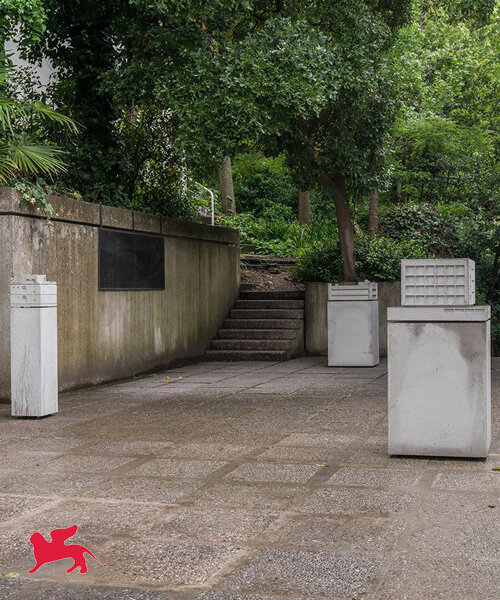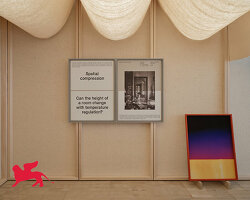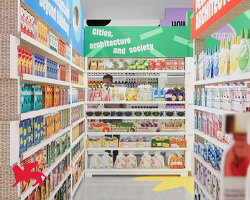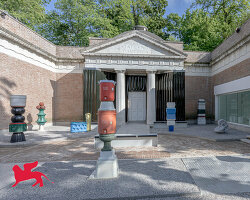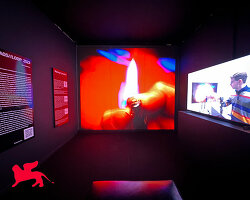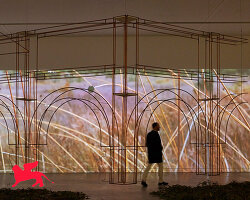israel pavilion presents ‘cloud-to-ground’
The Israel Pavilion at the 18th Venice Architecture Biennale has transformed a modern, inviting building, typically enveloped in a transparent glass facade, into an opaque and uncanny immersive experience. Titled Cloud-to-Ground, the exhibition hosts a series of concrete plinths and models exploring the material nature of the technological cloud and modern communication networks, with a particular focus on Israel and its environs. By surveying the rapid changes endured by these information infrastructures, the installations shed light on the economic, geopolitical, and architectural implications of the processes currently underway in Israel and the region, and the role of architecture in these.

Telephone Exchange Buildings, 2023, concrete cast (1:50 scale) and sound installation | image by Daniel Hanoch
questioning infrastructure at venice architecture biennale
A modern building designed by architect Ze’ev Rechter in 1952 has now been sealed up to host the installations of the Israel Pavilion at the Venice Architecture Biennale 2023. ‘The centerpiece of the exhibition, Cloud-to-Ground, takes its name from the scientific term for lightning striking the earth, and sits as an architectural inquiry. The immersive installation scrutinizes the hardware of the Fourth Industrial Revolution and presents a multi-faceted discourse by integrating the Pavilion itself as one of the elements on display.
The presentation uncovers the physical nature and hidden layers of data centers and telephone exchanges, commonly referred to as ‘black boxes’, connected by a vast network of cables – spanning over land, underground, and underwater. ‘The relative lack of architectural attention given to these structures nowadays stands in contrast to the significant role they played over the last two centuries,’ says the pavilion’s co-curator Oren Eldar. ‘By examining the rapid changes these information structures have undergone over the years, the exhibition sheds light on the economic and geopolitical processes currently underway in Israel and the region,’ continues co-curator Edith Kofsky.

Nimbus plaster relief and concrete cast Telephone exchange buildings | image by Daniel Hanoch
Israel’s role as a unique case study in this exhibition emerges from various factors — from its religious significance to its strategic location — has deemed it an important passageway between continents and turned it into a historical battleground existing in a delicate equilibrium. Recent developments, however, are reshaping its relative stability. The laying of a new optic cable by Google, set to bypass Egypt and connecting India to Europe is reviving the ancient merchant roads that once passed through this land. Meanwhile Google and Amazon’s data centers for the government’s Nimbus cloud project are effectively transforming the state into a cloud region competing with similar endeavors in Egypt and Saudi Arabia.
The Israel Pavilion captures these dynamics, intertwining Middle Eastern history, recent global technological advancements, and the shifting power structures they shape. ‘Focusing on the transition from sound to light, it extends as an immersive installation using void space, sound, and light as its primary materials, examining the shift from analogue to digital communication, from accessible, city-centered buildings to sealed structures in peripheral locations, and from a direct to a decentralized connectivity,’ notes co-curator Hadas Maor.
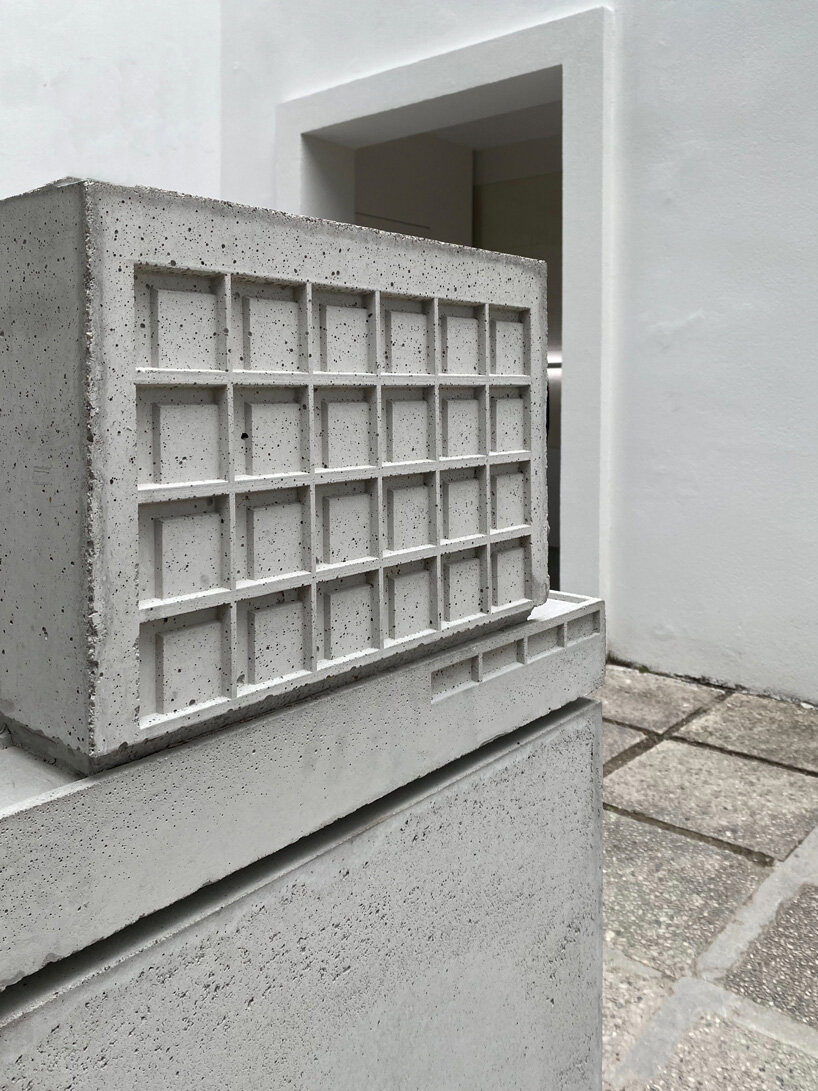
image © designboom

Slit Windows Model, 2023, concrete cast (1:50 scale) and sound installation | image by Daniel Hanoch

image © designboom

Fortress Model, 2023, concrete cast (1:50 scale) and sound installation | image by Daniel Hanoch

Afula, 2023, concrete cast (1:50 scale) and sound installation | image by Daniel Hanoch
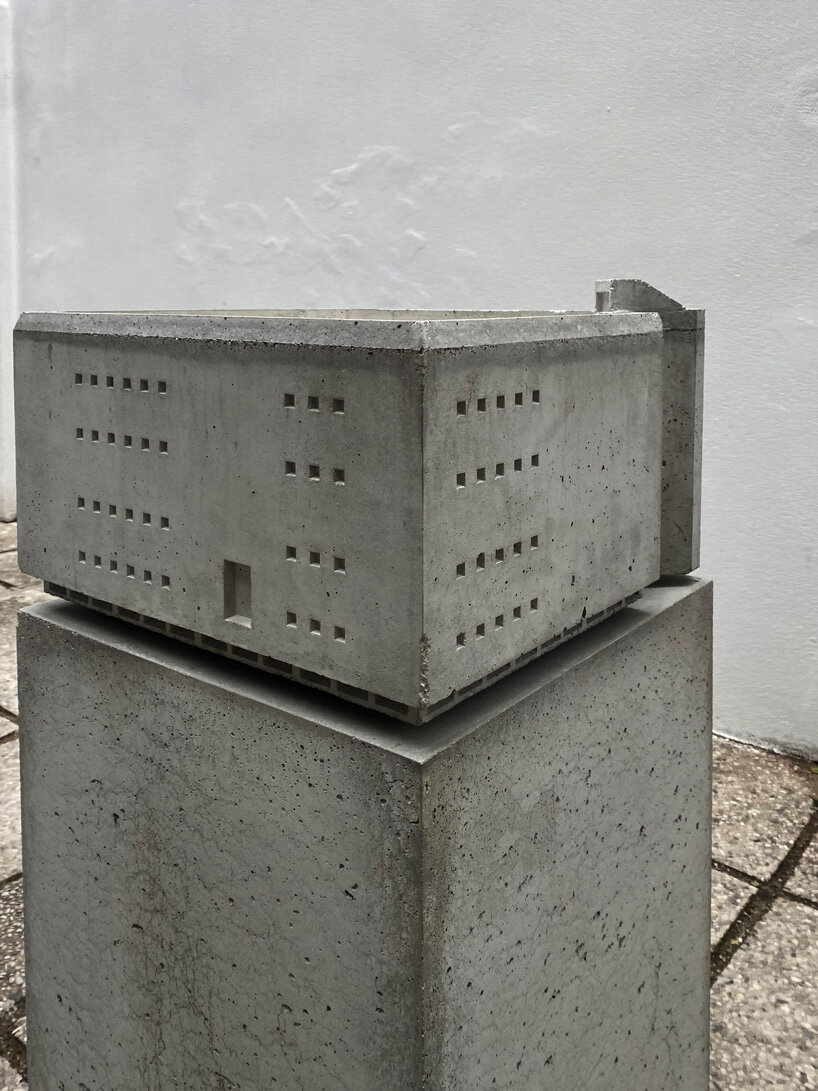
image © designboom

Orientalism Model, 2023, concrete cast (1:50 scale) and sound installation | image by Daniel Hanoch
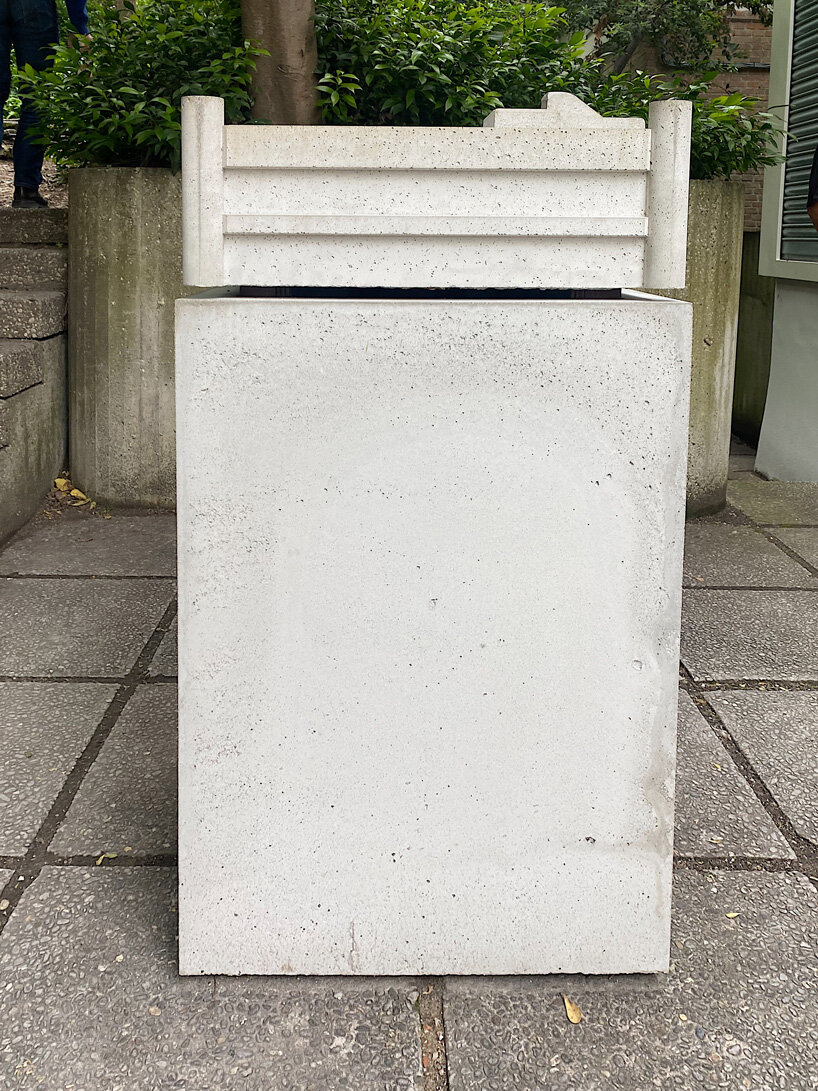
image © designboom
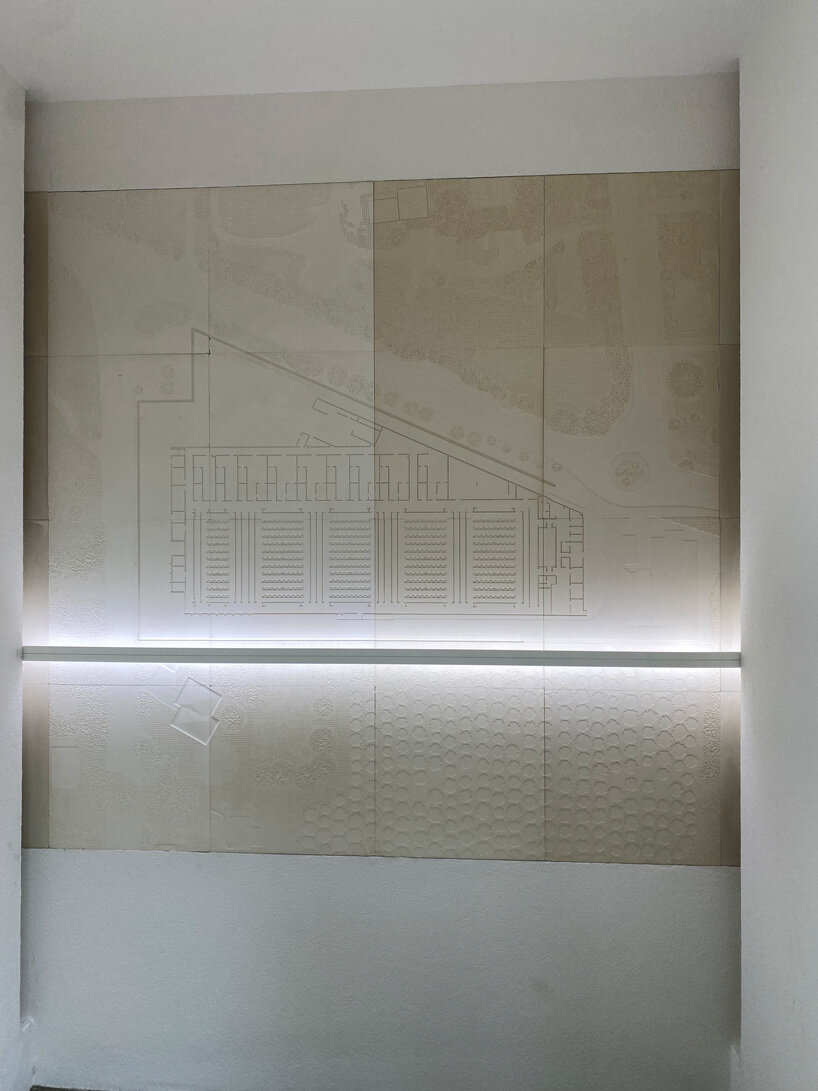
Nimbus, 2023, plaster relief (1:125 scale) | image © designboom
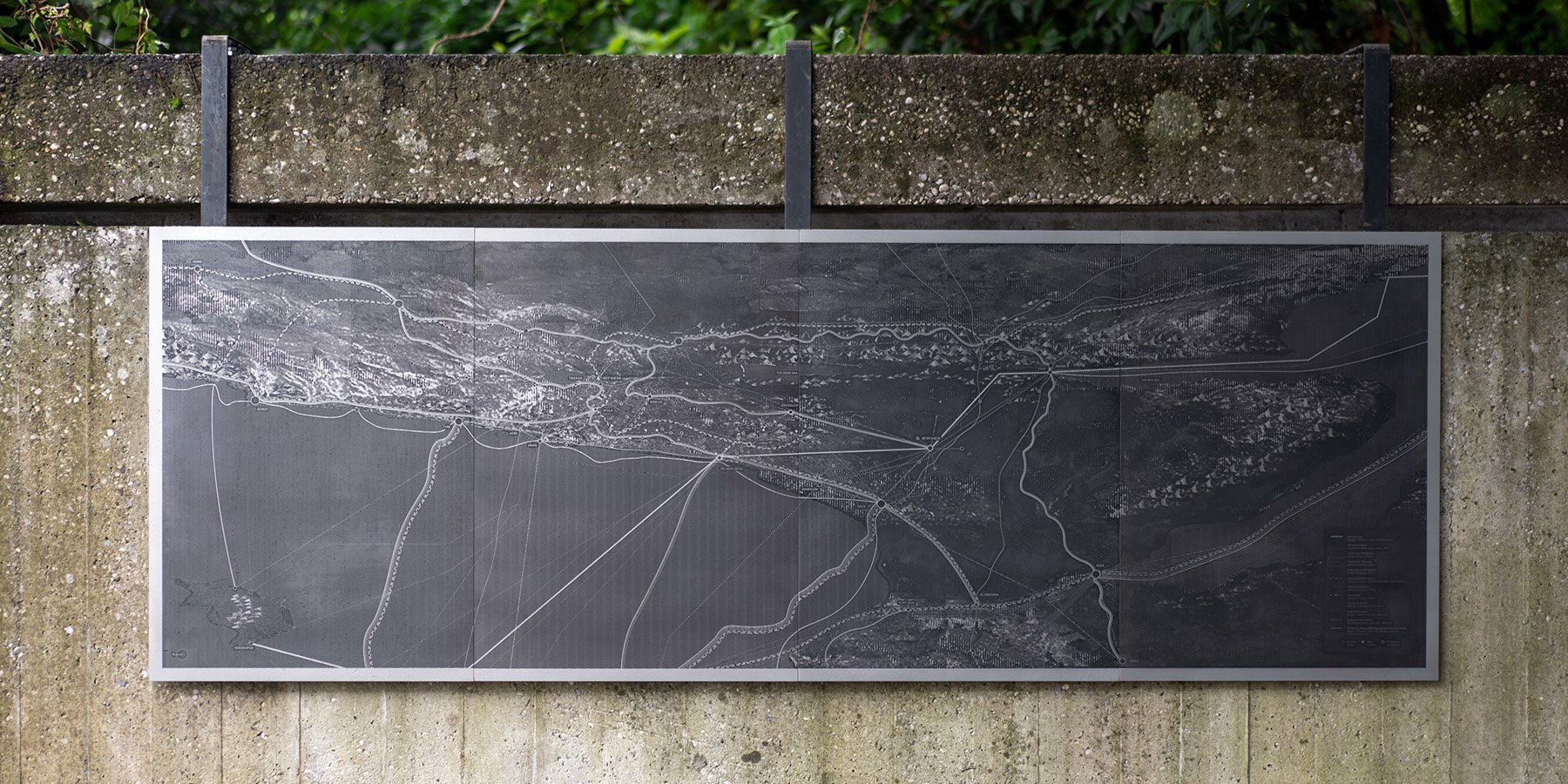
Israel Pavilion at the 18th Venice Architecture Biennale
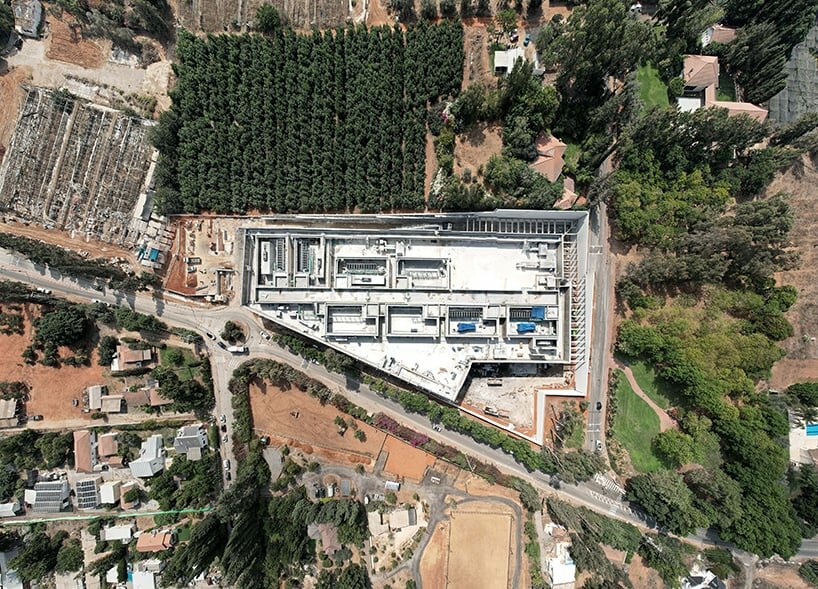
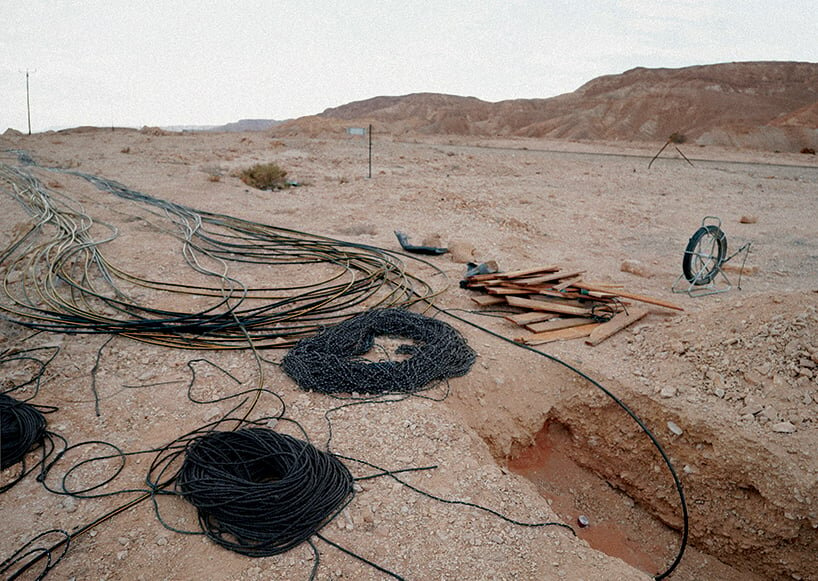
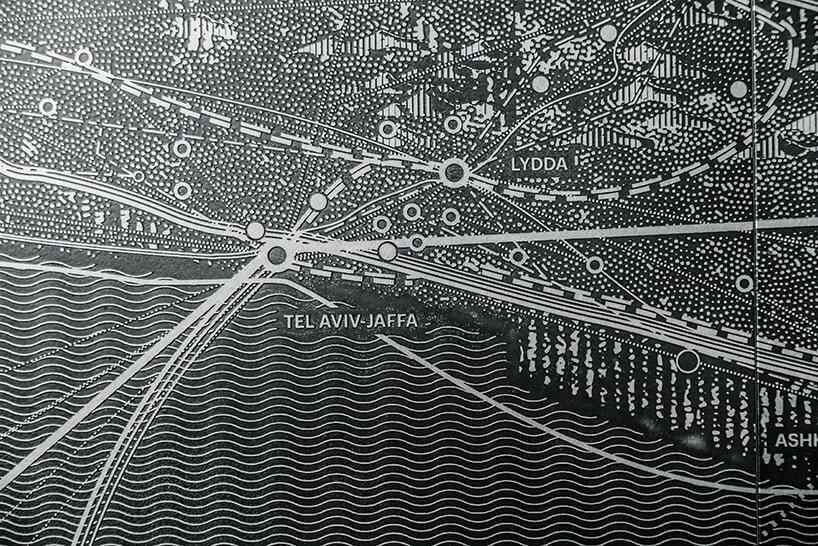
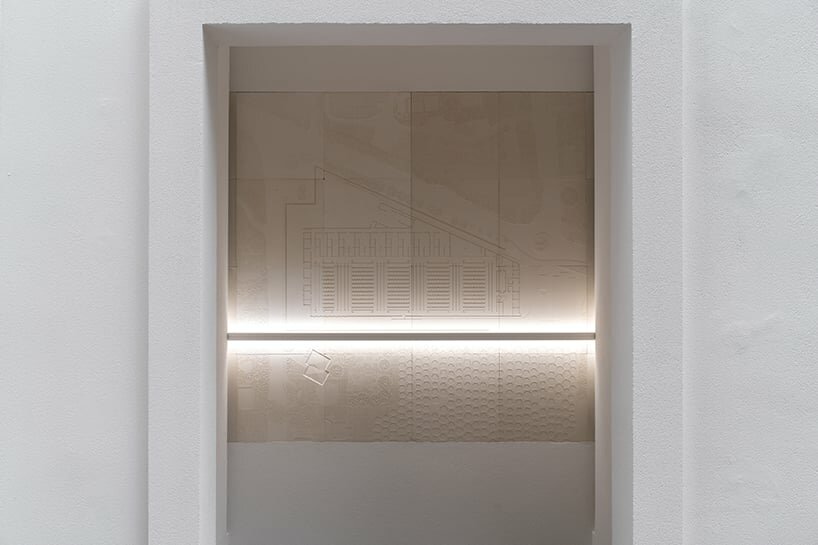
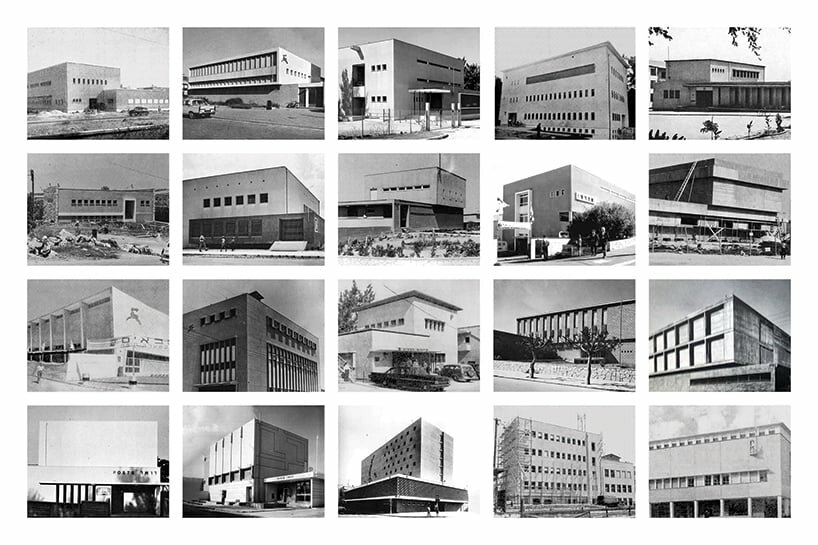

project info:
name: Cloud-to-Ground | Israel Pavilion
curated by: Oren Eldar, Edith Kofsky, Hadas Maor
program: 18th International Architecture Exhibition — La Biennale di Venezia | @labiennale
designboom has received this project from our DIY submissions feature, where we welcome our readers to submit their own work for publication. see more project submissions from our readers here.
edited by: ravail khan | designboom
Explore designboom’s ongoing coverage of the 2023 Venice Architecture Biennale: The Laboratory of the Future here, and follow our dedicated channel on Instagram here.
